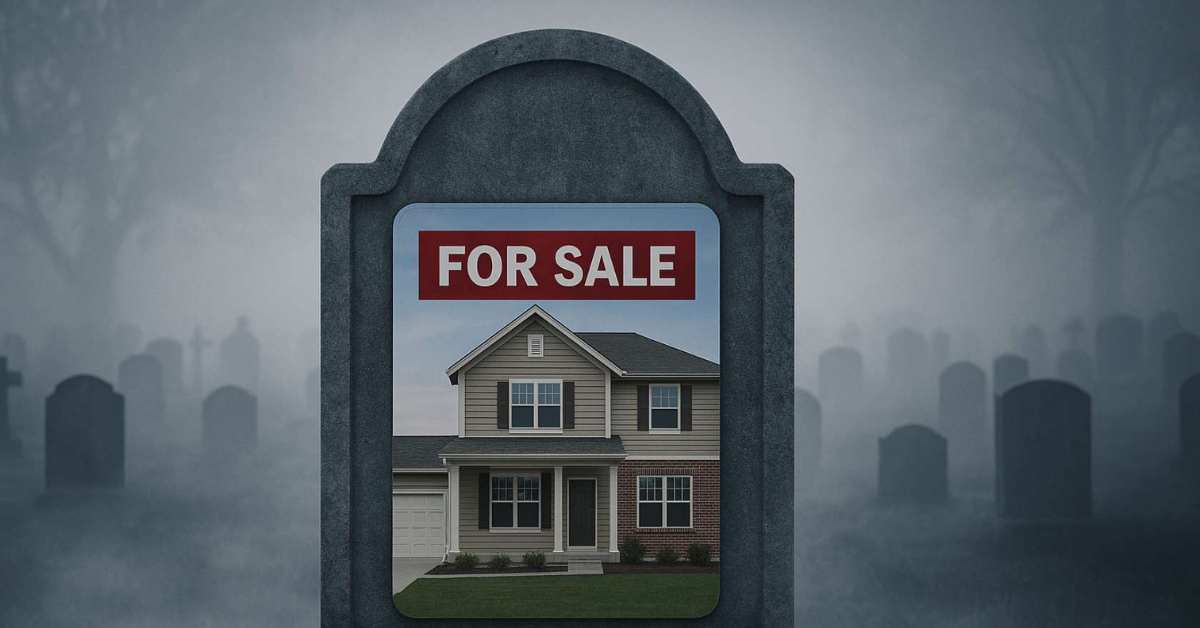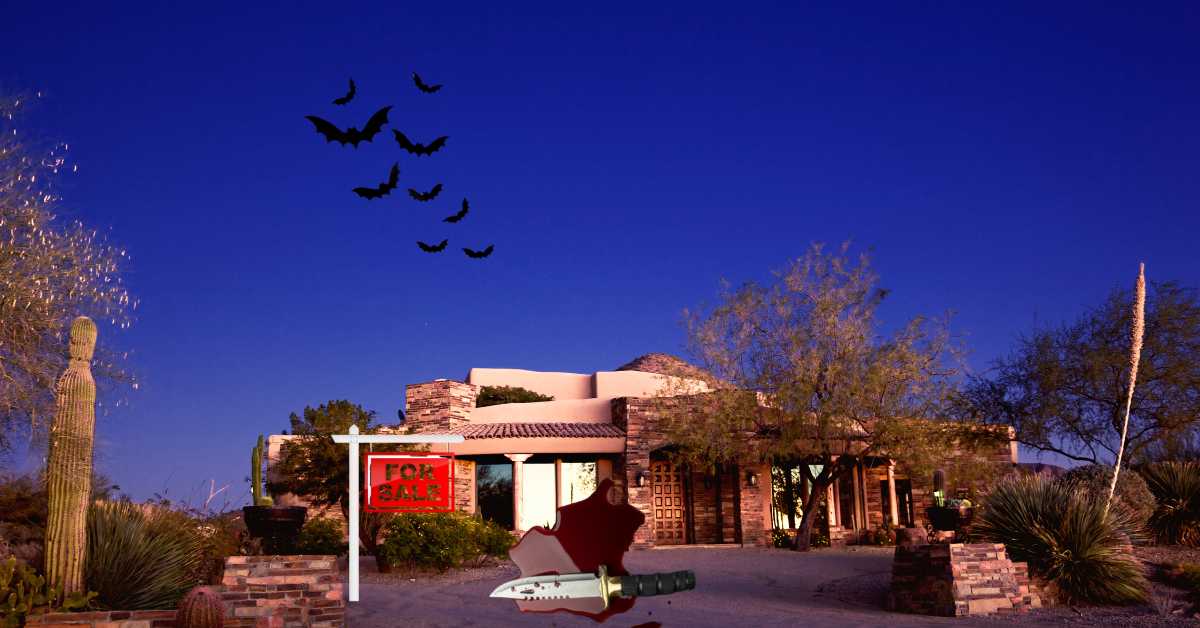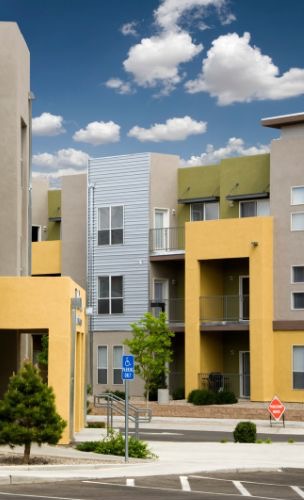
In today's housing market, it's a tale of two realities. Some homes hit the market and disappear within days, swept up by eager buyers in a flurry of offers. Then there are the others – those properties that linger week after week, their listing photos growing stale as potential buyers scroll right past them. Even though we're entering, or already in, a buyer's market (depending on your location), some listings are still receiving multiple offers.
If your home has been sitting on the market while others around you sell, you're not alone. According to recent data from Realtor.com, we're seeing a staggering 47% increase in delistings as frustrated sellers pull their homes off the market entirely. But here's the truth many real estate agents won't tell you upfront: most of these homes didn't need to be delisted. They needed a strategy overhaul.
The good news? A stalled listing isn't a death sentence for your home sale. It's a signal that something needs to change. Let's dive into the three most common reasons homes get stuck in real estate purgatory and what you can do to resurrect your listing before giving up altogether.
Oh, and please notice the date this was posted, especially if you're wondering why I've used certain "haunting" words and photos. Even though the Halloween connotation is to bring levity to the post, the subject is very serious for home sellers with listings sitting on the market without any offers.
1. Your Price Is Scaring Away Potential Buyers

I'm in several online real estate groups. Sometimes, a listing agent will post about a listing they're trying to sell and they will provide a link to the property so we can see photos, descriptions, and price. The #1 response from most agents is that it is priced too high. Most of the agents commenting are not from that area. But experienced agents don't really need to know that local market, and we can find out sales data without having access to the local MLS.
In many cases, there are glaring negatives that are immediately apparent from the photos. Bad landscaping, no garage, no updates, bad color choices for walls and flooring, etc. OK, not every home listed is going to be completely updated and show beautifully. And if that's the case, the price should reflect this. But I've seen these posts, and after a little investigation (or reading comments from other agents), these homes are priced too high for their condition in the area.
Why didn't that listing agent know these things? They most likely did (but some don't), and they want other agents to provide feedback so they can tell their sellers what others are saying. Sometimes, it takes more than just the listing agent for a seller to understand why they aren't getting showings or offers.
If your marketing is solid and you've addressed feedback, but your home still sits unsold, there's a high probability your asking price is the problem. In fact, price adjustments account for approximately 60% of previously stalled listings that ultimately sell.
The Psychology of Pricing

Many sellers approach pricing with emotional math rather than market reality. They add up what they paid, what they've invested in improvements, and what they need for their next purchase. Then they add a buffer for negotiations and arrive at a number that feels right to them.
The problem? Buyers don't care about any of that. They care about comparative value—what your home offers relative to other available options in their price range. And they're looking at those other properties in person. Not on paper, not just pictures online, they're going on showing appointments with their agent and are comparing each place.
"Price isn't just a number; it's a marketing tool," explains real estate economist Dr. Mark Reynolds. "Set it too high, and you're actually helping sell other properties by making them look like better values by comparison."
How Overpricing Kills Sales

When you price your home even 5-10% above its market value, several negative consequences follow:
You miss your target audience: Most buyers search in specific price bands. Price your $475,000 home at $510,000, and buyers who could afford $475,000 never see it, while those searching in the $500,000+ range compare it to homes that offer more value.
Your listing grows stale: The first 14-21 days on market are critical. Overpriced homes miss this window of maximum exposure and interest, becoming part of the background noise in buyers' searches.
Negotiation leverage weakens: Homes that sit on the market eventually attract lowball offers as buyers assume something must be wrong or that the seller is desperate.
The downward spiral begins: After weeks with no offers, sellers often make small price reductions that fail to regenerate interest. Each small cut makes the property seem increasingly undesirable.
Case Study: A Tale of Two Townhomes
 Consider this real-world example from a ;Scottsdale neighborhood last year:
Consider this real-world example from a ;Scottsdale neighborhood last year:
Two nearly identical Scottsdale townhomes hit the market in the same complex. Both featured three bedrooms, updated kitchens, and similar square footage. The first seller listed at $450,000, slightly above recent comparable sales. The second priced at $425,000, just below the most recent sale in the complex.
After three weeks, the $450,000 unit had seven showings and no offers. The $425,000 unit received multiple offers on its first weekend and sold for $442,000 after a bidding war.
The first seller eventually reduced to $435,000, then $420,000, finally selling for $410,000 after 68 days on market—$32,000 less than the strategically priced comparable property. This wasn't my listing, but I have many similar stories.
Strategic Price Correction

If price is your problem, here's how to correct course effectively:
Gather fresh market data. Ask your agent for:
- Recent pending sales (not just closed sales, which reflect market conditions from months ago)
- Average price per square foot in your immediate area
- Current inventory levels and absorption rates
- Price reduction patterns for homes similar to yours
Make one meaningful adjustment. Small, incremental price cuts suggest desperation without creating renewed interest. A single, significant reduction (typically 5-8%) signals serious intent and can restart your listing's momentum.
Consider the price threshold effect. Buyers search in price bands. Dropping from $405,000 to $399,000 may expose your listing to an entirely new buyer pool searching "up to $400,000." In fact, I always suggest sellers to price in even zeros. A $399,000 property won't be seen on a buyer's search of $400,000-$425,000. So a seller could miss out on a buyer that would be interested in their home, all because of a $1,000 pricing difference.
Remember: The "right price" isn't what you hope to get; it's what creates enough interest to generate multiple showings and, ideally, multiple offers. Sometimes pricing slightly below market value creates enough competition to drive the final sale price higher than an ambitious initial asking price ever could. My buyer had just cancelled a contract on a Scottsdale condo based on a bad home inspection. A new listing (same floorplan) came up that was $50,000 lower.
We set an appointment and he wrote up a full-price offer that was accepted. I will say, there were pluses and minuses for the less expensive listing, but the higher-priced condo had an A/C unit that was past its lifespan. That would have been a big cost that would occur sooner rather than later for my buyer. The lower-priced condo was dirty and the bathrooms were original, but my buyer wasn't crazy about the updated primary bathroom in the higher-priced unit to begin with. He wasn't even considering making any updates on the lower-priced condo. So he saved $50,000 plus the upcoming cost of a new A/C.
Why Do Listing Agents Take High-priced Listings?

There can be multiple reasons:
- Maybe they've worked with the sellers before and had a good experience, and they want to help them again.
- They have provided factual data that the seller doesn't want to accept, but the property shows great, and the listing agent feels it will sell, if not for the seller's list price, but with one or more price reductions down the road. In other words, they know the property has good potential.
- A 3rd reason is somewhat similar; the agent feels they can convince the seller to reduce the price, especially with future feedback stating that the price is too high.
- It is a referral from a past client, family member, acquaintance, etc., and they don't want to just turn it down. They want to at least give it a try.
True story: I had previous buyers who owned a second home. They called me to sell it because they liked working with me on their purchase. I presented my Comparative Market Analysis, and without going into too much detail, they were not happy. I listed it at their price and informed them that it was too high. We didn't have one showing in months! I communicated with them and sent them constant market updates. I got two price reductions from them, but even with the reductions, it was still priced too high, and once again, no showings.
Right before the listing expired, I let them know that I could not get them the price they wanted, and no other agent would be able to. I said that I wouldn't take the listing again unless they listed at my price. I even offered to refer them to another agent.
They relisted with me at a lower price than I recommended, and the first buyers who viewed the home made an offer. It was full price but with seller concessions. The sad part is that we listed the property in the prime selling season. When we relisted it, the normal seasonal slowdown was happening. If they had priced it right in the beginning, they would most likely have sold at my original price (or close to it) and netted more.
Don't Listing Agents Want to Price Low for a Quick Sale?
.jpg)
I would think as a seller, especially with online accessibility, it would be difficult for an agent to do this to most sellers. I always strive to create a relationship with my buyers and sellers to last a lifetime, so they continue working with me and send me referrals. If a seller ever thought I was trying to just get a quick sale, I don't think I'd ever hear from them again.
There are agents who have a "Low Price Strategy" where they list under market value in the hopes of multiple offers, which usually pushes the price up to market value, or even higher. Of course, most agents who do this offer it as an option to their sellers. I believe it can work, but since I can't guarantee it, I would never try to convince my sellers to list low.
If I were so confident in that method of selling, I would have done it for all of my personal sales. I've really wanted to give it a try, but I've never done it. I always like to stay at market value while being one of the lowest-priced, similar listings in my area. I always clean, declutter, and stage my homes (not professional staging, just my own).
2. You're Turning a Deaf Ear to Valuable Feedback
The second reason homes linger unsold often comes down to something surprisingly simple: sellers who aren't listening. Every showing, every comment, every passing week provides valuable data about how buyers perceive your home. Ignoring this feedback is like having a GPS but refusing to look at the map when you're lost.

The Feedback Loop You Can't Afford to Ignore
When buyers visit your home and leave without making an offer, they're communicating something important. Maybe they found the layout awkward, noticed maintenance issues that concerned them, or simply felt the home was overpriced for what it offered. Whatever the reason, this information is gold—if you're willing to mine it.
"I tell my clients that feedback is a gift," says real estate coach Terri Williams. "It might be wrapped in packaging you don't like, but inside is exactly what you need to make your home sellable."
Unfortunately, many sellers take feedback personally rather than strategically. They dismiss legitimate concerns as buyer pickiness or assume "the right buyer" will eventually come along who doesn't mind the issues others have pointed out.
Decoding Buyer Signals

Buyers won't always tell you directly why they're passing on your home. Here's how to read between the lines:
Repeated comments: When multiple buyers mention the same issue—even in passing—pay attention. If three different people comment on the dark kitchen or the steep driveway, others are likely thinking it but not saying it. If you keep hearing that it's priced too high, you've got your answer as to why you're not receiving any offers.
Low initial traffic: If very few buyers are even scheduling showings, your online listing isn't connecting with buyer needs or your price point is misaligned with perceived value.
Agent feedback patterns: Real estate agents often soften criticism to avoid hurting feelings. Learn to translate "interesting layout" (problematic floor plan) or "cozy" (too small for the price point).
Turning Feedback Into Action
Instead of getting defensive about feedback, get deliberate about addressing it:
Create a feedback system. Ask your agent to systematically collect and share feedback after every showing. Simple questions like "What did you like most/least?" and "How does this home compare to others you've seen?" can reveal patterns. I always set this up for my sellers.
Track market comparisons. Compare your home's performance metrics against similar listings:
- Average days on market in your area
- Number of showings before an offer for comparable homes
- Price per square foot for recent sales
- Showing-to-offer conversion rates
Identify actionable improvements. Not all feedback requires action, but patterns do. Prioritize issues that:
- Come up repeatedly in feedback
- Can be addressed at a reasonable cost
- Significantly impact buyer perception
When Michael and Sarah Thompson's home in Scottsdale wasn't selling, feedback consistently mentioned the dark, outdated kitchen. Rather than a full renovation, they painted the cabinets white, installed new hardware, and added under-cabinet lighting—a $3,000 investment that helped secure a sale $25,000 higher than their reduced asking price would have been.
Request brutal honesty. Ask your agent and a few trusted friends/family to tour your home and tell you what they'd change if they were selling it. Sometimes the issue is something you've simply stopped seeing.
Remember: your goal isn't to defend your home; it's to sell it. Every piece of feedback offers a pathway to making that happen faster and at a better price.
3. Your Marketing Has Flatlined

Remember when selling a home meant putting a sign in the yard and running an ad in the local paper? Those days are long gone. Today's real estate market moves at digital speed, and if your marketing approach hasn't kept pace, your beautiful home might as well be invisible.
Why Marketing Could Make or Break Modern Home Sales

Today's homebuyers begin their search online, often scrolling through dozens or even hundreds of listings before deciding which ones deserve an in-person visit. This creates a brutal first-impression economy where you have mere seconds to grab attention before someone swipes to the next option.
"It's like speed dating for houses," explains veteran real estate broker Samantha Johnson. "Buyers make snap judgments based on what they see in those first few photos. If the marketing doesn't immediately connect, they're gone – possibly forever."
The problem goes deeper than just having photos. Even homes with decent pictures can disappear into the digital void if the overall marketing approach lacks strategy and spark.
Signs Your Marketing Needs Life Support
How can you tell if your marketing is the problem? Look for these warning signs:
- Few showing requests despite being in a desirable neighborhood
- Website traffic data shows people clicking on your listing but quickly leaving
- Feedback mentions that the home "looks different in person" (usually better)
- Your listing gets lost among similar homes in your price range
- Social media and digital advertising for your property is minimal or nonexistent
James and Maria Rodriguez experienced this firsthand when selling their Scottsdale home last year. "We had our home listed for three months with barely any showings," James recalls. "We switched agents to someone with a modern marketing approach, and suddenly we had six showings in a week and an offer the following weekend. Same house, same price – completely different marketing."
Reviving Your Real Estate Marketing
If your home's online presence has flatlined, here's how to resuscitate it:
Invest in quality visual content. Today's successful listings go far beyond basic photos. Consider:
- Professional photography with proper lighting, wide-angle lenses, and careful composition
- Video walkthroughs or strategic slideshows that help buyers envision living in the space
- Drone footage for larger properties or homes with appealing outdoor spaces
- Short social media clips highlighting unique features
Rewrite your listing description with emotion and lifestyle in mind. Technical details matter, but buyers connect with how a home makes them feel. Instead of "4BR/3BA, 2500 sq ft," try "Sunlight floods the spacious kitchen where your family will gather for Sunday brunches, while the private backyard offers a peaceful retreat after long workdays."
Refresh your home's appearance. Even online, buyers can sense when a home feels tired:
- Update curb appeal with fresh mulch, trimmed bushes, and potted plants
- Replace dated light fixtures for a more contemporary feel
- Declutter and depersonalize so buyers see potential, not your personal taste
- Consider professional staging, which typically delivers a 5-15% higher sale price
Expand your digital footprint. Your listing should exist beyond the MLS:
- Targeted social media promotion to reach likely buyers
- Email marketing to agent networks and potential buyers
- Featured placement on real estate platforms where your likely buyers search
A comprehensive marketing reboot doesn't just attract more viewers—it attracts the right viewers and creates a sense of urgency. When multiple buyers discover your home simultaneously, it transforms a stagnant listing into a desirable property that people fear missing out on.
Bringing Your Listing Back from the Dead

Selling a home that's been sitting too long isn't about luck or waiting for market conditions to improve—it's about strategic adjustments based on market feedback. The homes that sell fastest and for the best prices share one common element: sellers who approach the process with flexibility and responsiveness.
If your home has been lingering unsold while others around you move quickly, don't despair. Use this temporary setback as valuable information rather than a failure. By revitalizing your marketing, truly hearing feedback, and pricing according to current market realities, you can transform your stagnant listing into your next success story.
The real estate market isn't random, and your home isn't cursed. It's simply waiting for you to align your selling strategy with what today's buyers actually want—and are willing to pay for. Make these adjustments now, and you might be surprised how quickly your "unsellable" home becomes someone else's perfect find.
Posted by Judy Orr on

Leave A Comment